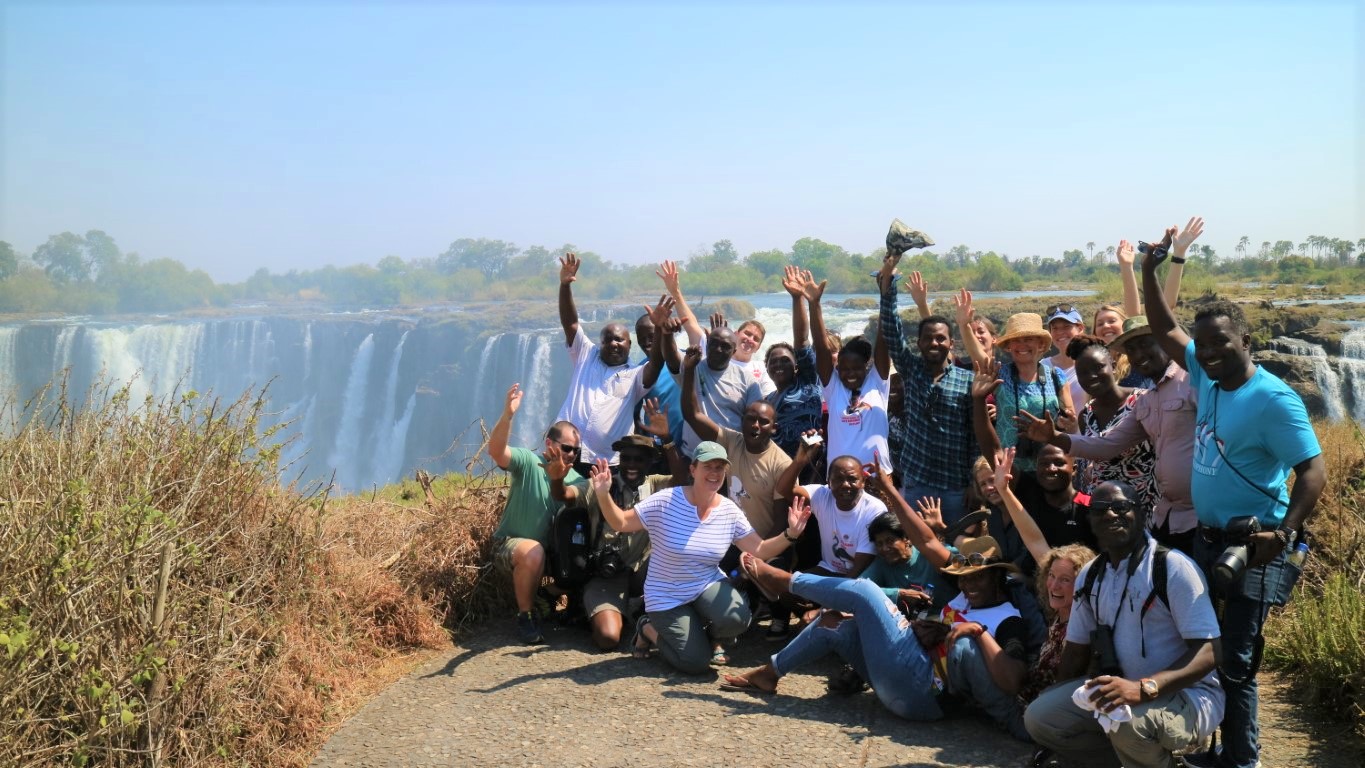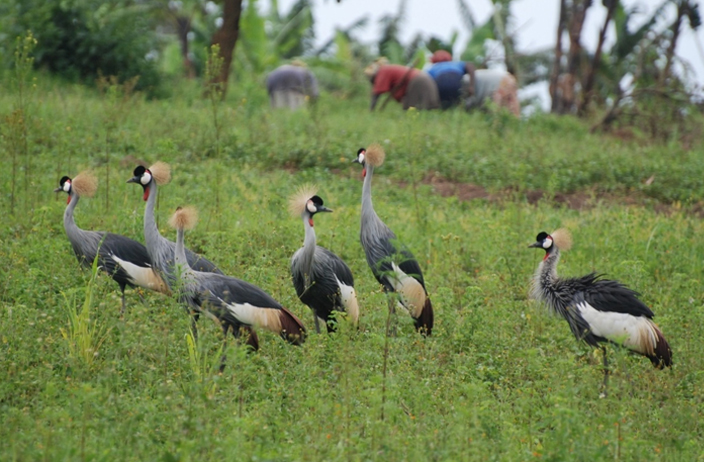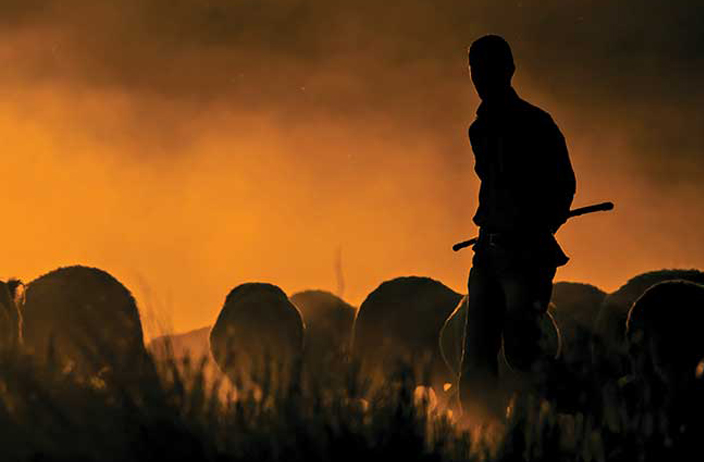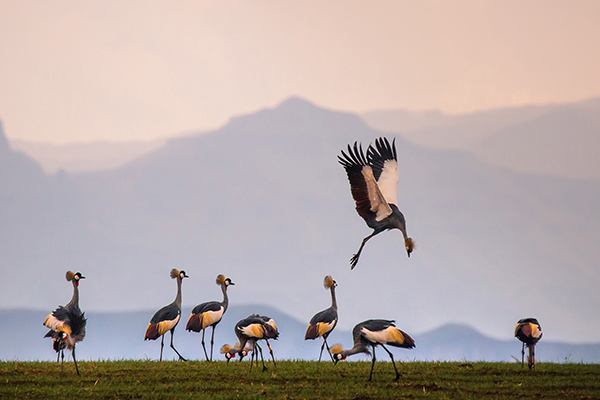
Photo credit: International Crane Foundation (ICF) and Endangered Wildlife Trust (EWT)
Conservation in Practice with the Endangered Wildlife Trust and the International Crane Foundation
Using the Conservation Standards to support communities and protect wildlife
Winner of the 2020 Case Study Competition
by ICF and EWT
Cranes play a crucial role in African ecosystems as they act as indicators of environmental health and vitality. Their presence signifies the availability of wetlands and grasslands, which are essential habitats for a wide range of species. Additionally, cranes contribute to seed dispersal and nutrient cycling, helping to maintain the balance and diversity of plant communities. Furthermore, these majestic birds have cultural and symbolic significance in many African cultures, representing grace, longevity, and harmony with nature.
The Endangered Wildlife Trust is dedicated to conserving threatened species and ecosystems in Africa to the benefit of all people. The International Crane Foundation works worldwide to conserve cranes and the ecosystems, watersheds, and flyways on which they depend. In partnership, they jointly manage the African Crane Conservation Program, which represents more than one third of both organizations’ conservation efforts. The African Crane Conservation Program partnership has active projects and relationships with other national NGOs in South Africa, Zambia, Uganda, Rwanda, Kenya, Ethiopia, and Senegal.

In order to protect cranes and support local communities, the Endangered Wildlife Trust and the International Crane Foundation work together to address conservation challenges. To do so, both organizations are committed to critically examining their work and looking for ways to improve and have adopted the Open Standards for the Practice of Conservation (the Conservation Standards (CS)) as a process that could help support their commitment to learning and improving. Both organizations quickly embraced the CS and began a journey to deeply integrate the CS and associated tools, like Miradi software, into their collective work, as well as the work of the individual organizations.
The process started in 2015 when the International Crane Foundation adopted the Conservation Standards, and appointed Erica Cochrane to lead the International Crane Foundation’s effort to use the Standards. The Endangered Wildlife Trust fully adopted the Standards in 2017 and the two have been working in tandem ever since.
To make this possible, EWT and ICF have provided the space and resources to completely integrate the CS into their organizations’ work and to support active involvement in the Conservation Coaches Network (CCNet), the Conservation Measures Partnership (CMP), and CMP learning initiatives.
Both organizations noticed that as they continued to use the Conservation Standards, significant donors, such as the Disney Conservation Fund and certain investment bankers, increased their support because of the adoptions of the Standards throughout their work.
The ICF and the EWT have benefited immeasurably from the mentorship, guidance and example solutions offered by the CS community and are committed to maintaining involvement and helping other organizations take up the CS so that everyone can have a great global conservation impact. Both the Endangered Wildlife Trust and the International Crane Foundation use their experiences and enthusiasm to further improve the Conservation Audit Tool, integrate the Audit Tool with the Conservation Capability Maturity Model, design a set of standard Miradi Share report templates for all Miradi Share users, and explore how population, health and environment approaches can support conservation outcomes.
Learn more about the International Crane Foundation’s and the Endangered Wildlife Trust’s adoption of the Conservation Standards by exploring their report below.
More about the organizations

The Endangered Wildlife Trust (EWT) is a registered Non-profit, Non-governmental, and Public Benefit Organisation. Since its establishment in 1973, the EWT has become a leading, well-known, and trusted conservation roleplayer. We are committed to conserving threatened species and ecosystems in southern Africa to the benefit of all. To achieve this, we focus on three main strategic imperatives: Saving Species, Conserving Habitats, and Benefitting People.
Their team is spread across southern and East Africa, working with businesses, communities, and government and are leaders in conservation research, community conservation, livelihood support, and training. They are innovative and skilled in reducing human-wildlife conflict, monitoring threatened species, and protecting safe spaces for animals and people.

The International Crane Foundation works worldwide to conserve cranes and the ecosystems, watersheds and flyways on which they depend. They provide knowledge, leadership and inspiration to engage people in resolving threats to cranes and their diverse landscapes.
Over nearly 50 years, ICF has developed unique collaborations and led effective community-based conservation programs, important research projects and innovative captive breeding and reintroduction efforts. These endeavors have inspired international cooperation, helped improve livelihoods for people around the world and lead to the protection of millions of acres of wetlands and grasslands.
Download CS
The Conservation Standards is the product of inputs, field tests, and discussions among members of the Conservation Measures Partnership (CMP), which has final editorial authority over the Conservation Standards. Substantial input was also provided by members of the Conservation Coaches Network (CCNet) and other CMP partners.
Photo Credit: Felix Cybulla
Support CS
The biodiversity conservation community is tackling large, complex, and urgent environmental problems where the stakes are high. However, we don’t have a fully functional system to assess the effectiveness of our actions. Without more rigorous measurement of effectiveness and disciplined recording of our efforts, we cannot know or demonstrate that we are achieving desired results.
Photo Credit: Felix Cybulla
Our Collaborators
Every organization, agency, project, and individual has its own preferred set of terms. There is no right answer – the most important thing is that the members of your project team and the people with whom you work have a clear and common understanding of whatever terms you choose to use.
Photo Credit: Chris Scarffe
Contact Us
To inquire about supporting Conservation Standards (CS) or for general inquiries, please contact us at CMPinfo@ConservationMeasures.org
Photo Credit: Nature Conservancy of Canada
